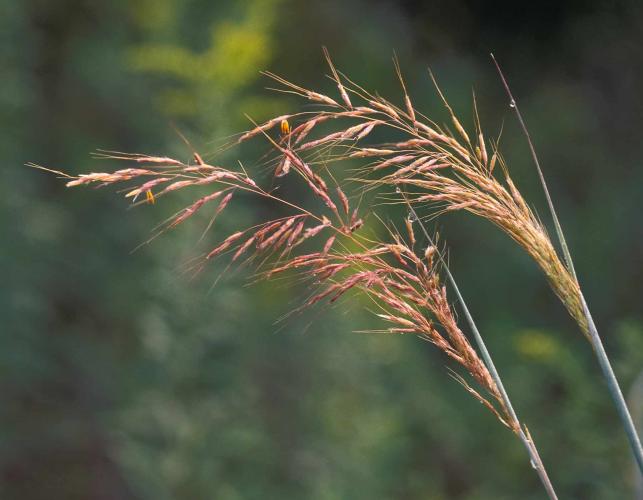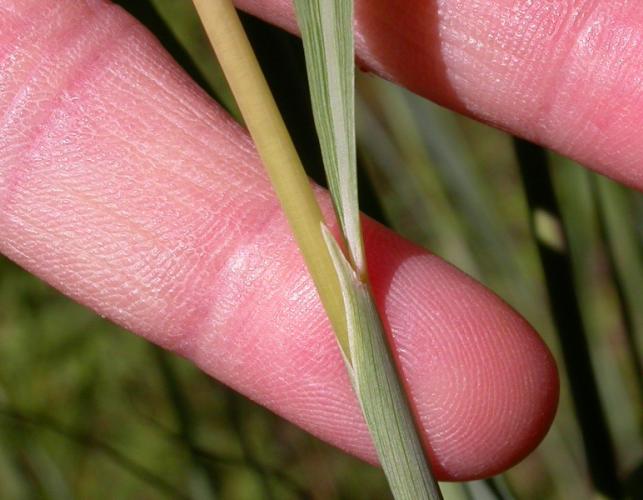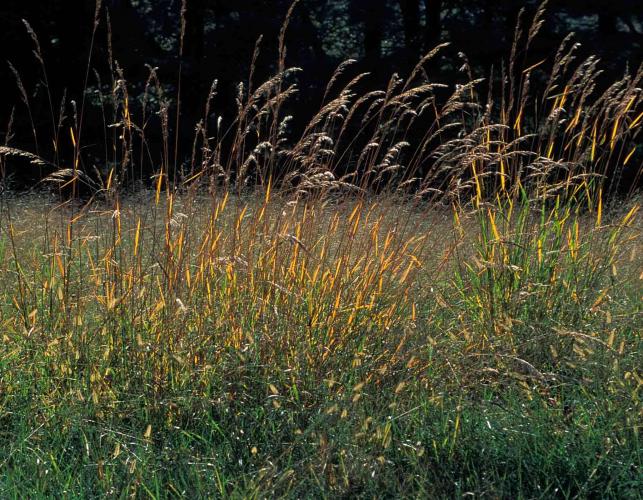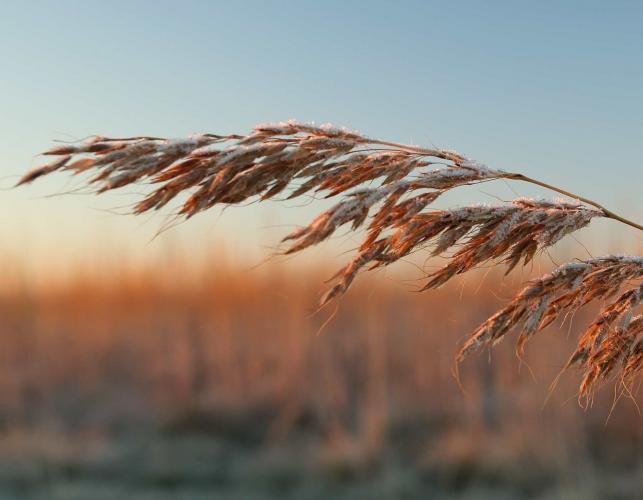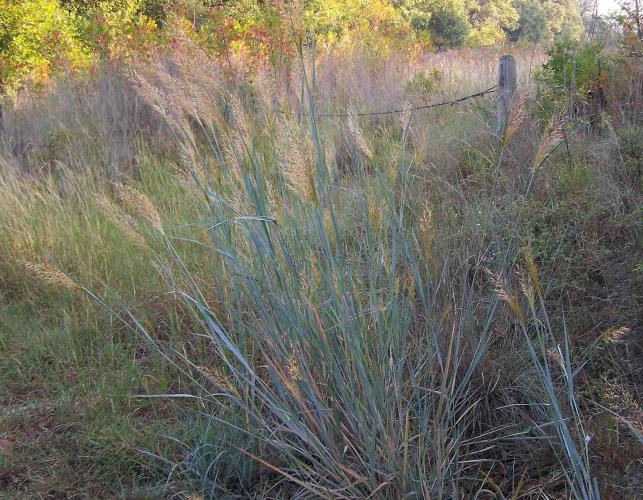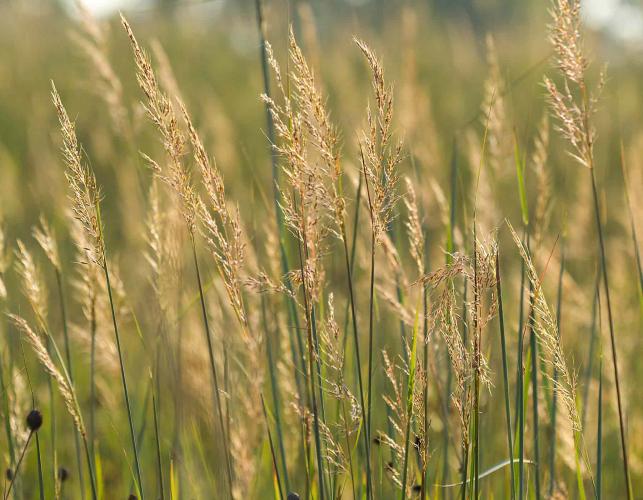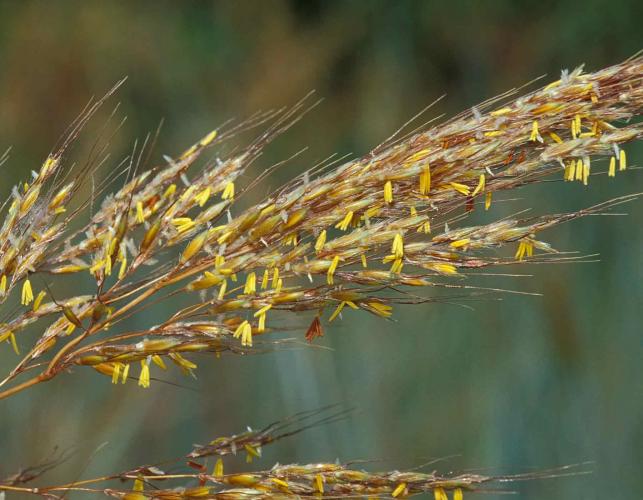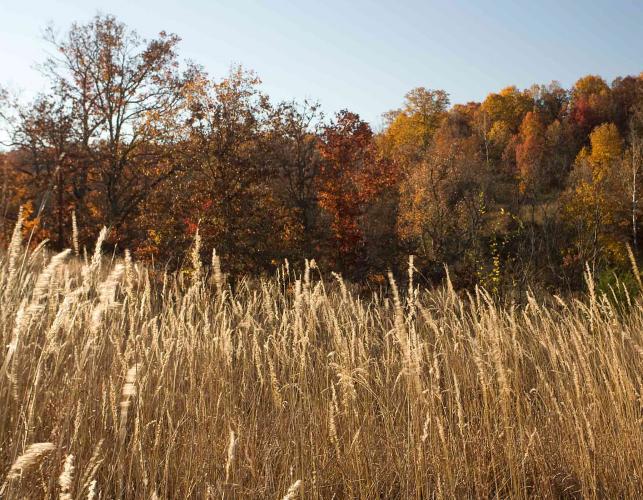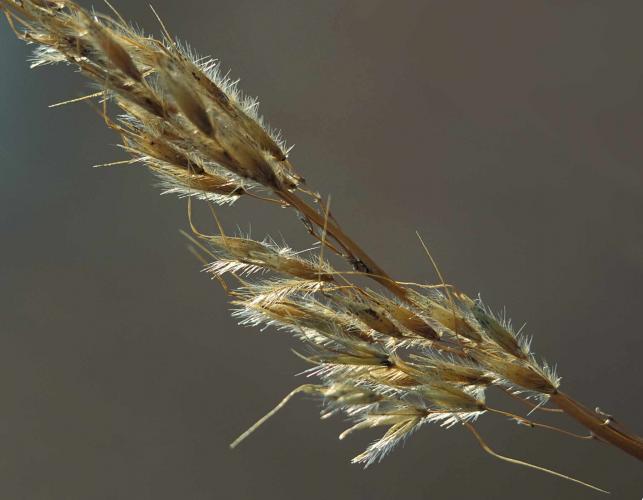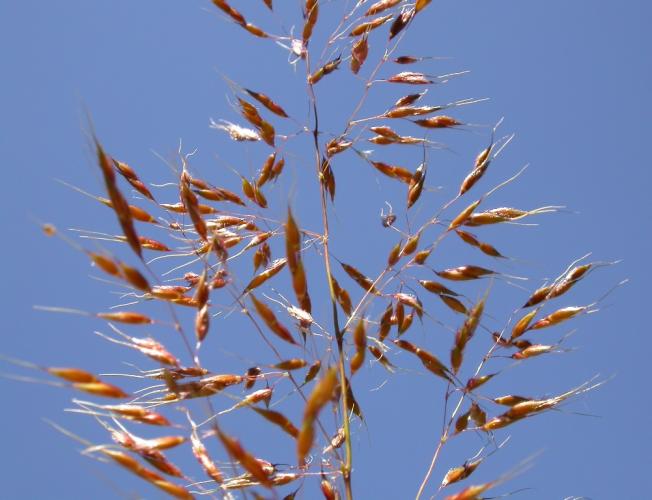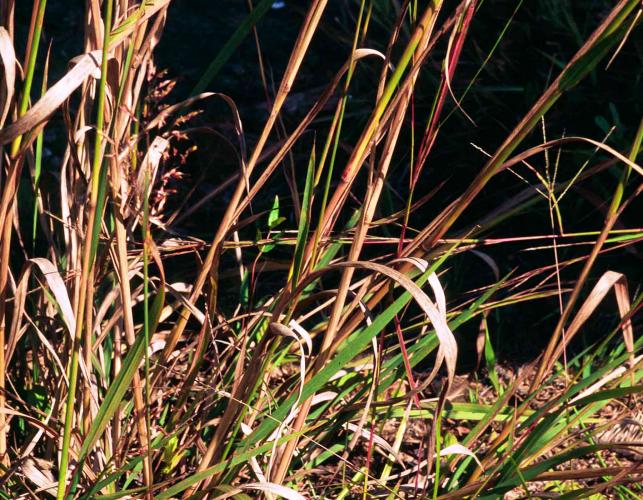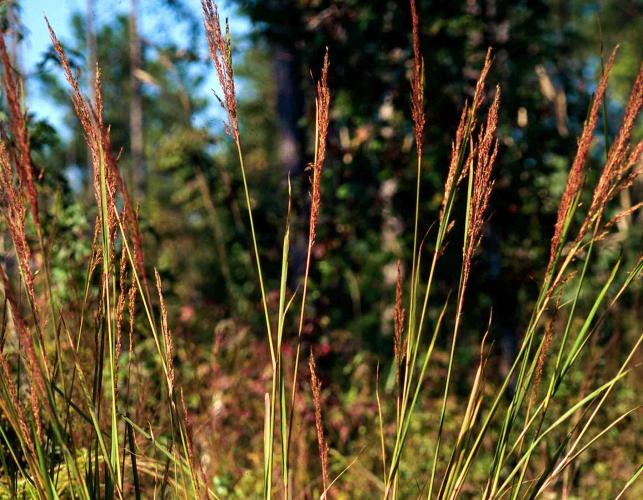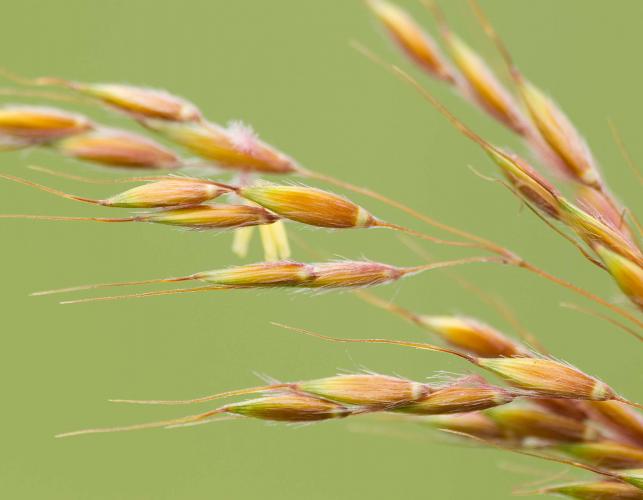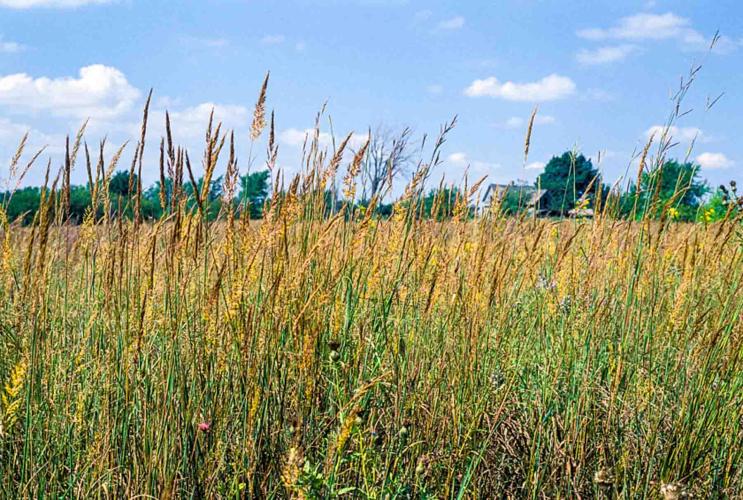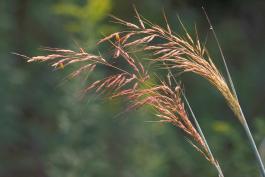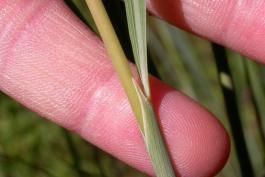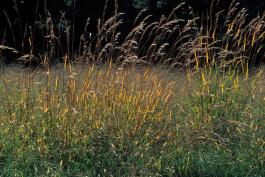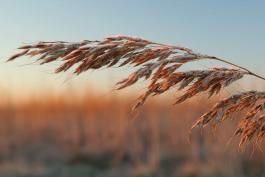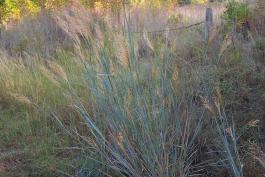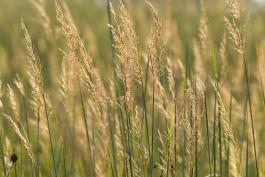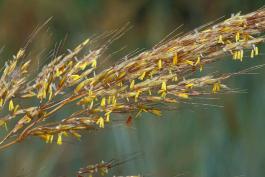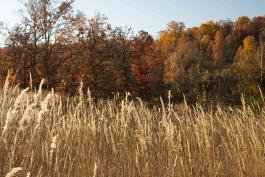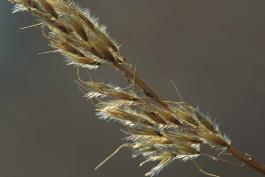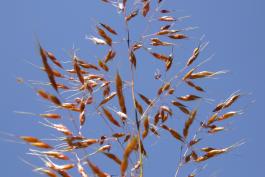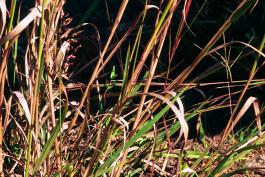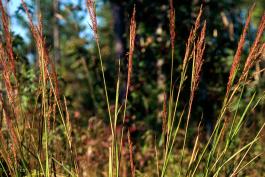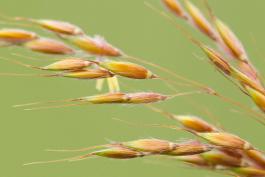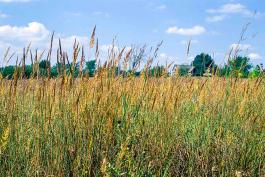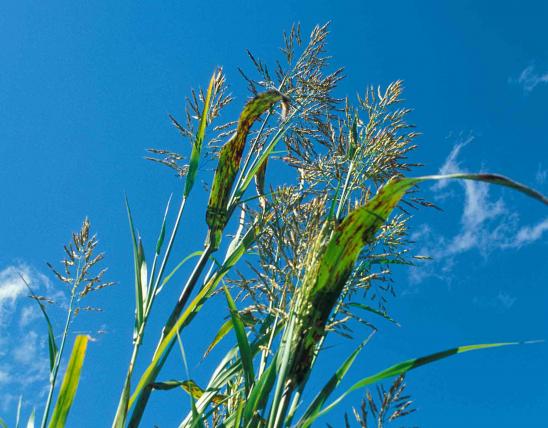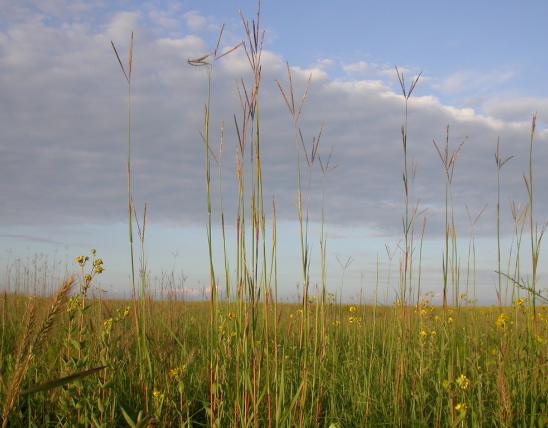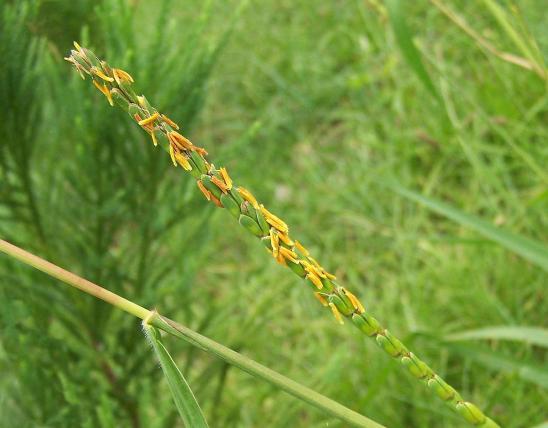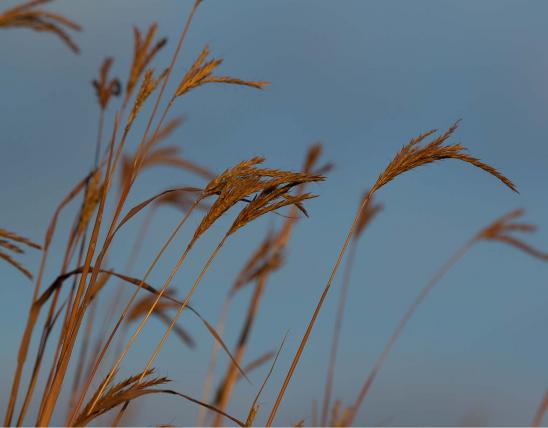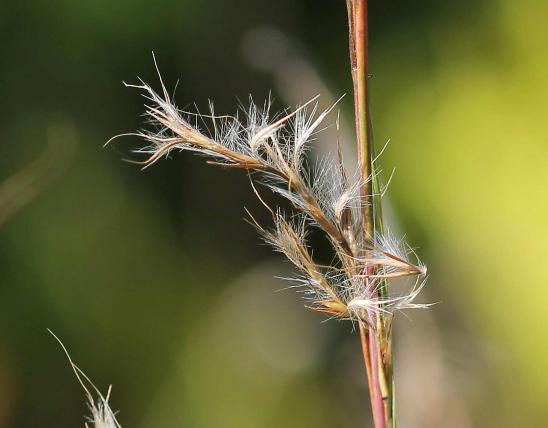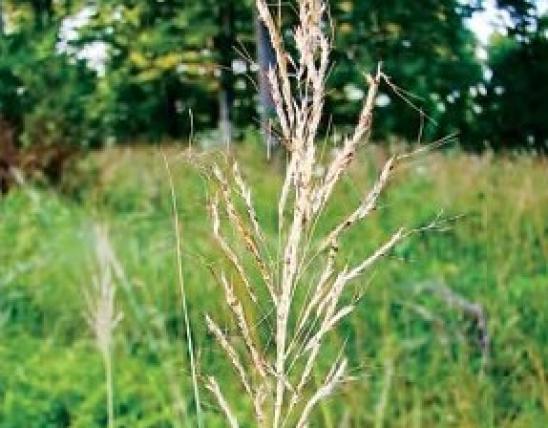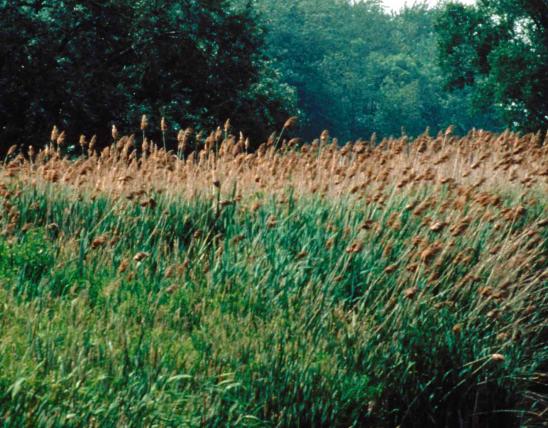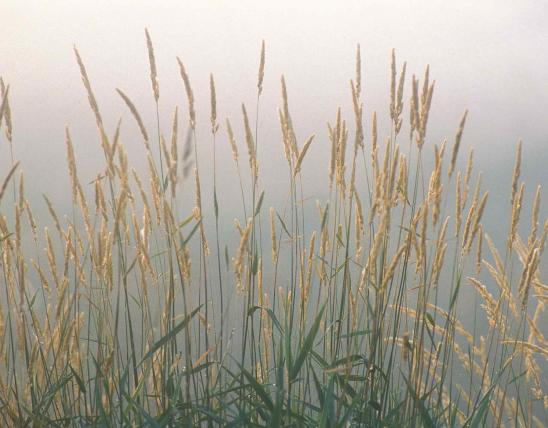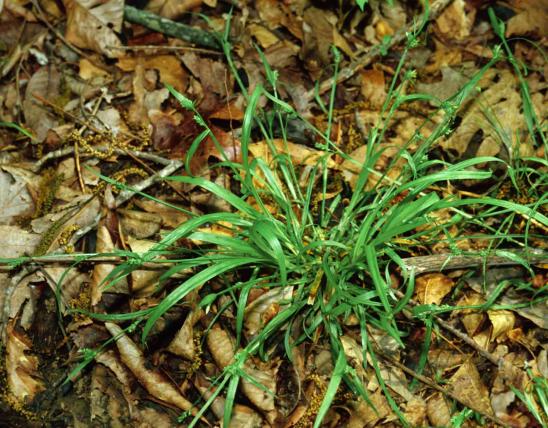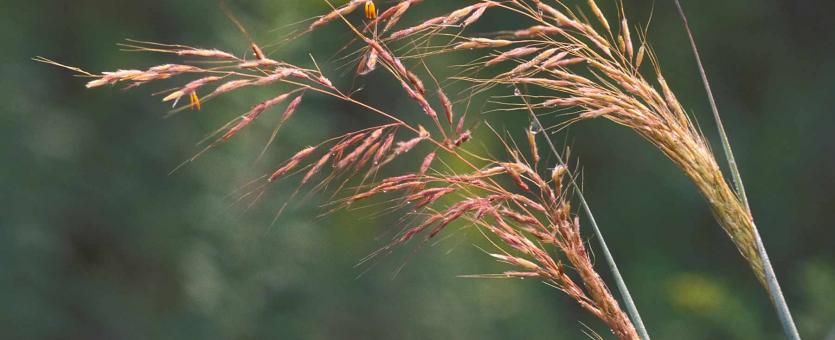
Indian grass is a native perennial bunch grass with flowering stalks 2–7 feet tall. Rootstocks are short, scaly rhizomes. The mature seed heads are dense, golden, and plumelike, held upright or slightly arched, with twisted and bent awns protruding from the florets. Leaf blades can be 2 feet long and are roughened, the base with a distinctive pair of short clawlike prongs (auricles) where it joins the stem. Flower heads develop August–September.
Height: flowering stems 2–7 feet
Common nearly statewide, but absent from portions of the Mississippi Lowlands in the Bootheel.
Habitat and Conservation
Occurs in upland prairies, glades, savannas, and openings of dry upland forests; also in old fields, pastures, roadsides, railroads, and dry, open, disturbed areas. Indian grass is a major component of tallgrass prairie and glade vegetation. Like most other prominent tall grasses of tallgrass prairies (such as big bluestem), Indian grass is a warm-season grass that photosynthesizes most efficiently during the hottest part of the summer, a time when cool-season grasses may go dormant.
Status
Within the large and diverse grass family, Indian grass is included in the same tribe as corn, sorghum, big bluestem, little bluestem, gama grass, and silver grass (Miscanthus — an Asian grass popular in landscaping).
Human Connections
Indian grass is considered highly desirable and nutritious for livestock, both as fodder and for production of hay. The common name Indian grass reminds us of the deep history of Native Americans in the prairies of North America. Their historic land management system of igniting occasional fires maintained prairie ecosystems.
Ecosystem Connections
Indian grass is a major component of tallgrass prairie and glade habitats. Just as trees dominate woodland and forest communities, grasses dominate prairies, glades, and savannas. Thus a large variety of native animals and plants rely on Indian grass and associated grasses for their existence.
